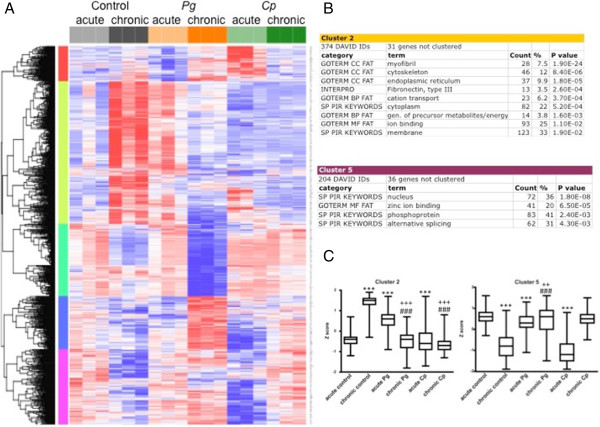Figure 4.

Acute to chronic time point cluster analysis. The top 1000 differentially expressed genes for acute and chronic time points: the effect of group, time, and group x time interactions determined by two-way ANOVA are grouped into 5 distinct clusters. A. Heat map depicts relative expression among all groups and time points. Clusters are color-coded by row sidebars: red (cluster 1), chartreuse (cluster 2), mint green (cluster 3), blue (cluster 4), and magenta (cluster 5); and dendrogram is left of the color-coded sidebars. Each row corresponds to a gene (gene symbols are listed to the right of each row) and each column to a sample. The colors are scaled by row; red and blue indicate 2 standard deviations above or below the mean (white), respectively. At the arbitrary cutoff of 1000 genes, the two-way ANOVA interaction (group:timepoint) FDR q value was < 0.117 and the p value was < 5.52 × 10-3. B. DAVID analysis of clusters 2 and 5. Gene enrichment is indicated by p values (EASE scores, a modified Fisher exact p value). C. Box and whisker plots of the mean expression (log2) for Clusters 2 and 5 reflect patterns seen on heat map. ***p < 0.0001 vs. acute control; ###p < 0.0001 vs. chronic control; +++p < 0.0001 vs. acute treatment; ++p < 0.001 vs. acute treatment by Mann-Whitney test.
